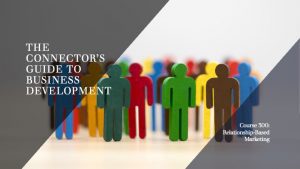How to Find a Legal Career You’ll Enjoy
In the old days there was one primary career path for an attorney worth his salt: get into a good firm and make partner. Those who couldn’t cut it left to go in-house or into academia. A few with grand ambitions became politicians or lobbyists (or politicians and then lobbyists). Those five options remain viable. But today, the law degree has replaced a good liberal arts education as the vehicle that can take you anywhere. The impactful and lucrative ways to utilize a law degree, both within and outside the legal industry, are as plentiful as your imagination. They include executive leadership, technology, business advisory, marketing, sales, entrepreneurship, public relations, consulting, finance, technical or creative writing, content creation, political strategy, and so on.
The Formula for Career Planning
There is a formula for career planning: assessment + fit + map = career nirvana.
- First, conduct a personal assessment of three factors: your unique talents, your personal motivations, and your individualized barriers and openings to opportunity.
- Second, explore which roles provide the best match quality.
- Third, map out a flexible strategy to enter a suitable field and advance into leadership over time.
Step One: Personal Assessment
- Talent. What are you best at? Notice, I did not ask what you are good at because lawyers do well at many tasks. But the ability to do many things well can be a curse if it prevents you from identifying that at which you truly excel—your best and highest use. So, identify your top five skills using this list and any additional abilities you may have: public speaking, researching, problem solving, debating, mediating, organizing, critical thinking, writing, analyzing, innovating, influencing, negotiating, teaching, listening, curating, conversing, managing, networking.
- Motivation. Who are you at this point in your life? Who you are at this moment will determine your values. It’s okay if your values change with age. In fact, that is probably the norm. If you have what some would view as shallow values now, they may deepen over time. Or they may not, but the important thing is to be honest with yourself so you can choose a path that fulfills you. Choose your top 3 to 5 values: money, job security, prestige, power/influence, free time, location, freedom of thought and expression, autonomy, congeniality, societal impact, etc.
- Opportunity. While it’s true that America is the land of opportunity, there are factors that govern how easy or difficult the terrain is to traverse. It’s best to identify your barriers and pathways to entry early so you can position yourself to overcome or capitalize on them. Have you noticed, for example, that many foreigners become entrepreneurs rather than key employees? That is because our system is set up for foreigners to invest in America rather than take jobs that could be filled by Americans. Thus, country of birth can be a barrier to job opportunities and a pathway to entrepreneurship. Other potential obstacles and aids to opportunity include race, gender, education, family lineage, and prior career choices. Also, although there is a seemingly limitless number of jobs, plum opportunities are in short supply. So, there are gatekeepers who manage access to those prizes. Who controls the field you want to enter? What do you have or what can you obtain (i.e., a platform, key connections, a stellar track record) that gives you an edge or that may compensate for any inherent weaknesses and cause gatekeepers to choose you over the many others vying for the same perch?
Step Two: Fit or Match Quality
The key to career satisfaction is match quality. Thus, the next step in your career plan should be to match your talents, motivations, and opportunities/challenges with the career tracks that are available today. (As you advance in your career, roles may emerge that do not exist today. However, if the career you choose today is a fit, the talents that you develop are likely to qualify you for market shifts, especially if you keep abreast of change and continually update your skillset.)
Now, take a moment to match your strengths, motivations, and challenges to today’s careers. Are you tech-savvy? A social media darling? Do you have great teeth and hair and comfort in front of a camera? If so, let these factors guide your career choice. You may not need to leave the legal industry to find match quality. You can be a legal reporter, a legal analyst, a legal recruiter, a legal marketer, a legal product designer, a legal consultant, and yes, a legal practitioner in the setting of your choosing. Your work activities can be as broad or as narrow as your talents, motivations, and willingness to overcome any barriers dictate.
Step Three: Career Mapping
Once you have determined where you fit, research how to enter and excel in that field. Who is doing what you want to do? What is their background and skillset? Map out a strategy. In practice, the path is never as straight as you envision. However, if you don’t begin with a map, your activity may be aimless and unlikely to produce desirable results. So, put a 5-year plan on paper containing the roles, promotions, outside activities, and achievements you intend to pursue. But be flexible. If an opportunity arises that isn’t part of your plan, evaluate whether it meshes with your motivations because, if it does, it may represent an alternative route to the same destination or to a different opportunity on the horizon that you simply can’t see yet.
Bottom Line: a legal career spans about 40 years. What you do now should position you to take your career in any number of directions as you mature. If you discover and choose the best fit, I believe your career will invigorate and challenge you for a lifetime.











No responses yet